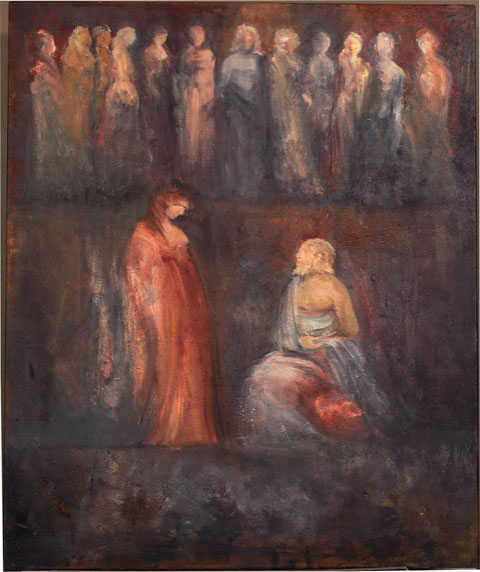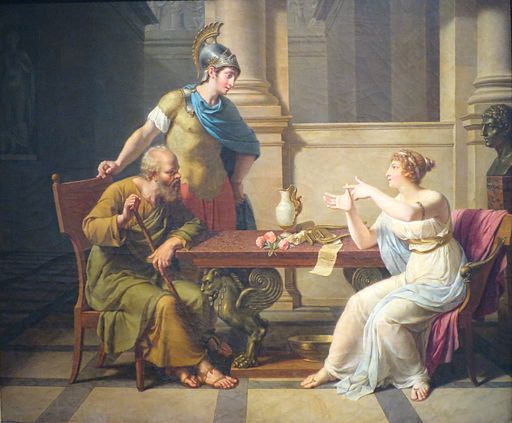2021.02.27 | By Gregory Nagy
§0. This essay is inspired by a most admirable comment made in an article by Johanna Hanink (2015) about nostalgic attempts, in the early fourth century BCE, at recovering the charisma associated with the former glory days, as it were, of the Athenian Empire as it once had flourished, during most of the fifth century. At one point in her article, in referring to the Menexenus of Plato, she comments on a glaring anachronism in the text, which she explains as a fanciful way of imagining Socrates as speaking from the dead. Others before Hanink, duly acknowledged by her—and they happen to include Nicole Loraux (2006) and Zoe Petre (2009), two sorely-missed friends of mine who are no longer living—have offered comparable explanations, but Hanink is unique, I think, in the way she folds into her analysis the idea of reperformance (I recommend also another relevant article of hers, Hanink 2017). In my essay here, I hope to build on her analysis by adding the idea of a recomposed performer, complementing the more familiar idea of a reperformed composer.

§1. I now turn to the anachronism that led to the comment I so admire in the article to which I have already referred, by Johanna Hanink (2015). It has to do with Socrates, as paired with a most admired female acquaintance of his. The acquaintance in this context is not the Diotima of Plato’s Symposium, though that woman, I confess, figures in my mind as the most admired of all women in the works of Plato—especially when I think of such entrancing visualizations of Diotima and Socrates as in the painting by Zoie Lafis that graces the cover for this essay of mine. No, the woman of interest in the context of the article by Hanink is not the Diotima of Plato but, rather, “his” Aspasia, commonly known as the hetairā of Pericles.


§2. In the Menexenus of Plato, we find our author’s stage-Socrates in the act of performing a funeral oration that he had supposedly learned from a composer who was none other than Aspasia. This funeral oration, supposedly composed by Aspasia and memorized by Socrates, who then performs the composition in the Menexenus, is meant to rival the funeral oration composed and performed by Pericles himself in honor of the Athenian war-dead who had perished in the first year of the Peloponnesian War—a composition that has been recomposed for posterity in a written form by Thucydides. To be compared—and here is where the glaring anachronism asserts itself—are the war-dead of Athens who are honored in the funeral oration supposedly composed by Aspasia and then later performed by Socrates. The war-dead who are honored in this funeral oration had perished in the so-called Corinthian War, which drew to a close in 386 BCE. And by this time, of course, not only Pericles but also Aspasia were long gone, no longer living.
§3. This anachronism, highlighted by way of an explicit reference in Plato’s Menexenus (245e) to the historical context of 386 BCE, the time when the Corinthian War came to an end, is explained in a unique way by Hanink (2015:291). She interprets the funeral oration composed by Aspasia—but performed by Socrates—as a stylized reperformance of the original funeral oration composed and performed by Pericles in the historical context of 431 BCE, in the “glory days” of the Athenian Empire—at a time when the Peloponnesian War, which would eventually bring to ruin the wealth, power, and prestige of Athens as an imperial city, had just barely started. Those glory days are nostalgically relived, as it were, by way of a reperformance in the not-so-glorious days of 386 BCE, which is also the date, as Hanink points out, when the Athenian State Theater introduced non-competitive reperformances, at the festival of the City Dionysia, of old classical tragedies composed by “dead poets” like Aeschylus, Sophocles, and Euripides; such reperformances were to co-exist at the City Dionysia, from here on, with ongoing competitive performances of new tragedies composed by contemporary dramatists who would be the “new poets” of their own post-classical era.
§4. In my own work on Plato’s Socrates, I have interpreted Socratic self-representation in Plato’s staged dialogues of Socrates as a prototype, designed by Plato himself, for the reperforming of Socrates himself as a potential dialogic partner for future dialogues with his readers after he is long gone, no longer living (Nagy 2013 “Hours” 22 and 23). In those dialogues, I think, we see Socrates talking from the dead to his living readers. And he is not only talking to them: he is also talking with them by way of the dialogues that he sets in motion with his then-living interlocutors, who will be replaced by now-living readers in future generations.
§5. In this way, Socrates in the medium of prose as dramatized by Plato is not only a reperformed composer: he is also a recomposed performer, in the sense that the dead Socrates as performer can be replaced by living continuators who can proudly inherit, generation after generation, the role of a recomposed Socrates. In Poetry as Performance (Nagy 1996: “Epilogue, dead poets and recomposed performers,” linked here), I have built a similar model that can fit the medium of ancient Greek poetry.
Bibliography
Csapo, E. 2010. Actors and Icons of the Ancient Theater. Chichester and Malden, MA.
Hanink, J. 2014 “The Great Dionysia and the end of the Peloponnesian War.” Classical Antiquity 33:319–346.
Hanink, J. 2014/2017. Lycurgan Athens and the Making of Classical Tragedy. Cambridge. Paperback 2017.
Hanink, J. 2015. “Why 386 BC?: Lost empire, old tragedy, and reperformance in the era of the Corinthian War.” In Reperformance of Drama in the Fifth and Fourth Centuries BC, ed. A. Lamari, 277–296. Berlin and Boston.
Hanink, J. 2017. “Archives, Repertoires, Bodies, and Bones: Thoughts on Reperformance for Classicists.” In Imagining Reperformance in Ancient Culture: Studies in the Traditions of Drama and Lyric, ed. R. Hunter and A. Uhlig, 21–41. Cambridge.
Hanink, J., and A. S. Uhlig. 2016. “Aeschylus and His Afterlife in the Classical Period: ‘My Poetry Did Not Die with Me’.” In The Reception of Aeschylus’ Plays through Shifting Models and Frontiers, ed. S. E. Constantinidis, 51–79. Leiden and Boston.
Loraux, N. 2006. The Invention of Athens: The Funeral Oration in the Classical City, trans. A. Sheridan. Cambridge, MA.
Millis, B. W., and S. D. Olson. 2012. Inscriptional Records for the Dramatic Festivals in Athens: IG II2 2318–2325 and Related Texts. Leiden and Boston.
Nagy, G. 1996. Poetry as Performance: Homer and Beyond. Cambridge. http://nrs.harvard.edu/urn-3:hul.ebook:CHS_Nagy.Poetry_as_Performance.1996.
Nagy, G. 2013. The Ancient Greek Hero in 24 Hours. Cambridge, MA. http://nrs.harvard.edu/urn-3:hul.ebook:CHS_NagyG.The_Ancient_Greek_Hero_in_24_Hours.2013.
Nagy, G. 2016.11.03. “Some jottings on the pronouncements of the Delphic Oracle.” Classical Inquiries. https://classical-inquiries.chs.harvard.edu/some-jottings-on-the-pronouncements-of-the-delphic-oracle/.
Nagy, G. 2020. Second edition of Nagy 2013.
Petre, Z. 2009. “Revenants et sauveurs, le Ménexène de Platon et la comédie attique.” In Memory, Humanity, and Meaning: Selected Essays in Honor of Andrei Pleșu’s Sixtieth Anniversary, ed. M. Neamțu and B. Tătaru Cazaban, 155–168. Bucharest.
Rosenstock, B. 1994. “Socrates as Revenant: a Reading of the Menexenus.” Phoenix 48:331–347.
Wilson, P. 2000. The Athenian Institution of the Khoregia. Cambridge.
